The range of the new surveillance extends well beyond the S-300 strike distance of 200 kilometres, and covers US drone and aircraft bases on the Arabian peninsula, as well as US warships in (and under) the Persian Gulf and off the Gulf of Oman. Early warning of US air and naval-launched attacks has now been cut below the old 4 to 6-minute Iranian threshold. Counter-firing by the Iranian armed forces has been automated from attack warning and target location.
This means that if the US is detected launching a swarm of missiles aimed at Iran's air-defence sites, uranium mines, reactors, and military operations bunkers, Iran will launch its own swarm of missiles at the US firing platforms, as well as at Saudi and other oil production sites, refineries, and pipelines, as well tankers in ports and under way in the Gulf.
"The armed forces of Iran," said a Russian military source requesting anonymity, "have air defence systems capable of hitting air targets at those heights at which drones of the Global Hawk series can fly; this is about 19,000 to 20,000 metres. Iran's means of air defence are both foreign-purchased systems and systems of Iran's own design; among them, in particular, the old Soviet system S-75 and the new Russian S-300. Recently, Iran transported some S-300's to the south, but that happened after the drone was shot down [June 20]. Russian specialists are working at Bushehr now and this means that the S-300's are also for protection of Bushehr."
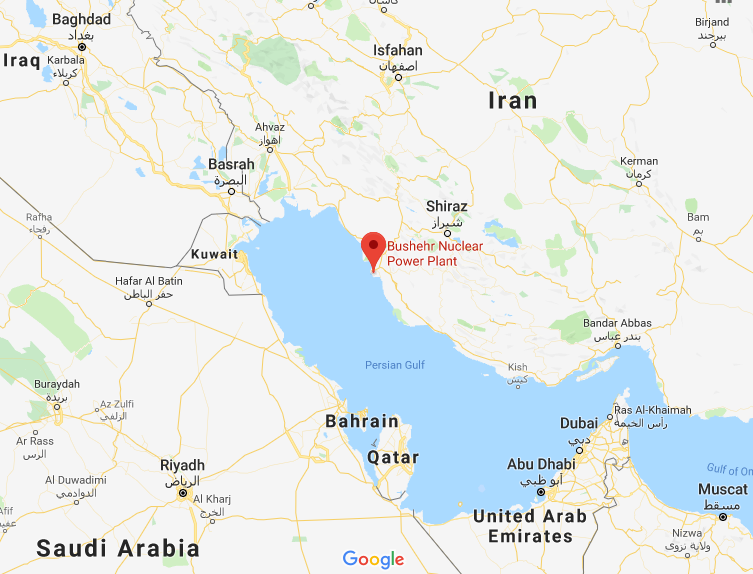
Last Thursday, June 20, just after midnight, a US Global Hawk drone was tracked by Iran from its launch at an airbase in the United Arab Emirates (UAE), south of Dubai. The take-off and initial flight route appear to have been more than 300 kms from Iranian tracking radars. Four hours later, the aircraft was destroyed by an Iranian missile at a point at sea off Kuhmobarak. Follow the route tracking data published by the Iranian Foreign Minister, Javad Zarif here.
Additional tracking data on the US drone operation have been published in a simulation by the Iranian state news agency, Fars. The news agency claims the successful strike was by the Iran-made Khordad missile, an S-300 copy; the altitude has not been reported (design ceiling for the aircraft is 18,000 metres).
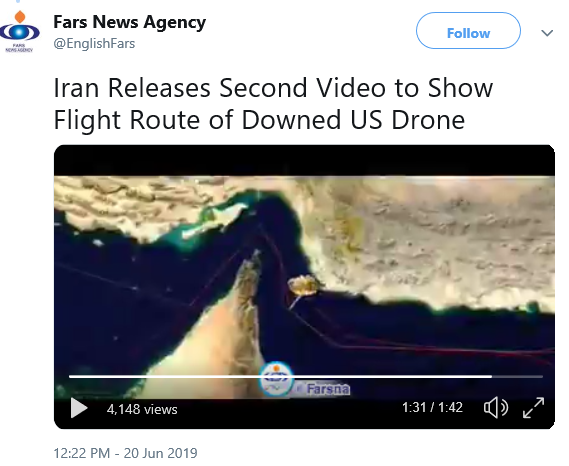
Iranian military sources have told western reporters they have established "a joint operations room to inform all its allies in Lebanon, Syria, Iraq, Yemen and Afghanistan of every step it is adopting in confronting the US in case of all-out war in the Middle East."
Maps published to date in open Russian military sources show the four main anti-air missile defence groups (PVO) on Iranian territory, and the strike range of their missiles. The 3rd and 4th PVOs are now being reinforced to oppose US reinforcements at sea and on Saudi and Emirati territory.
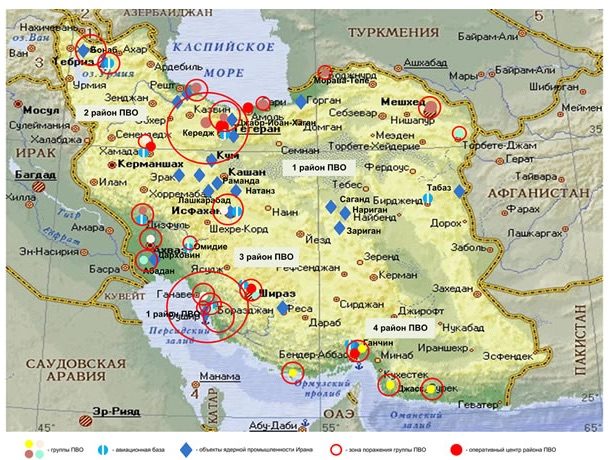
The main Iranian vulnerability facing American attack, reports Gavrilov, is less the range, volume and density of firepower with which the Iranians can respond than the relatively slow time they have shown to date for processing incoming attack data, fixing targets, and directing counter-fire. "In today's conditions of organization and conduct of rapid air combat, a high degree of automation of the processes of collection, processing, transmission and exchange of radar information, development of solutions for repelling strikes, and conducting anti-aircraft missile fire is extremely necessary."
RANGE AND ALTITUDE OF MAIN IRANIAN AIR DEFENCE WEAPONS
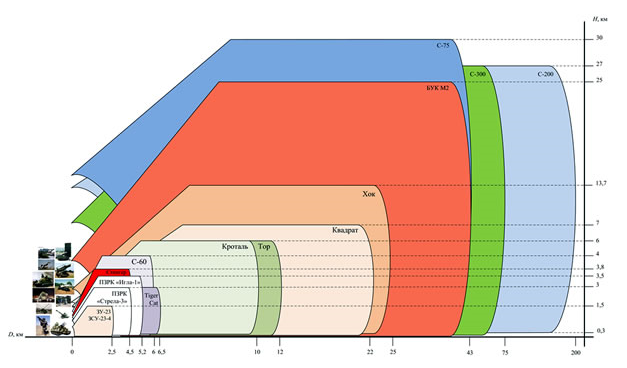
Gavrilov does not estimate how far the Iranians have been able to solve by themselves, and with Russian help, the problems of automation and coordination of fire. To offset whatever weakness may remain, he recommends specific technical contributions the Russians can make. These include the technology of electronic countermeasures (ECM) to jam or deflect US targeting signals and ordnance guidance systems.
While Gavrilov believes the Iranian military have already achieved high enough density of fire against incoming weapons, he isn't sure the range and altitude of Iranian radars will be good enough to match the attack risks. To neutralize those, he recommends "Russian-made electronic warfare systems. The complex of EW systems is able to significantly reduce the ability of attack aircraft to search for, detect and defeat ground targets; disrupt the onboard equipment of cruise missiles in the GPS satellite navigation system; distort the readings of radio altimeters of attack aircraft, cruise missiles and UAV's [unmanned aerial vehicle, drone]..."
In briefings for sympathetic western reporters, Iranian commanders are emphasizing the Armageddon option; that is, however weak or strong their defences may prove to be under prolonged US attack, the Iranian strategy is not to wait. Their plan, they say, is to counter-attack against Arab as well as American targets as soon as a US missile attack commences; that's to say, at launch, not inflight nor at impact.
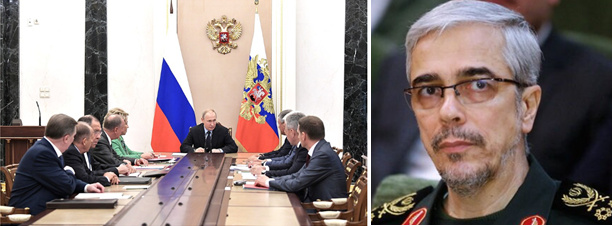
Unpredictable consequences in Russian is being translated in Farsi to mean the cessation of the oil trade in the Persian Gulf. "As oil and commodities of other countries are passing through the Strait of Hormuz, ours are also moving through it," Major General Mohammad Baqeri, the Iranian chief of staff, said on April 28. "If our crude is not to pass through the Strait of Hormuz, others' [crude] will not pass either."

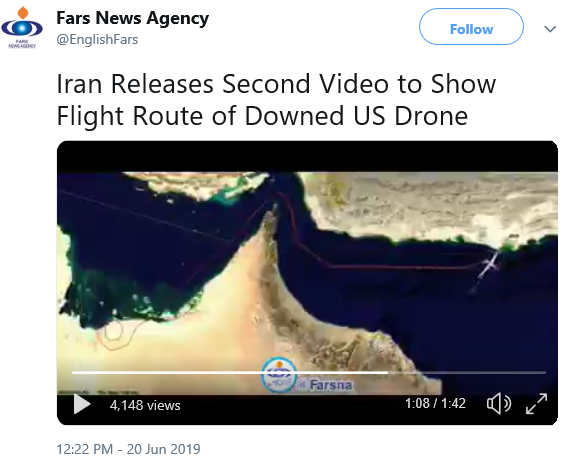



Reader Comments